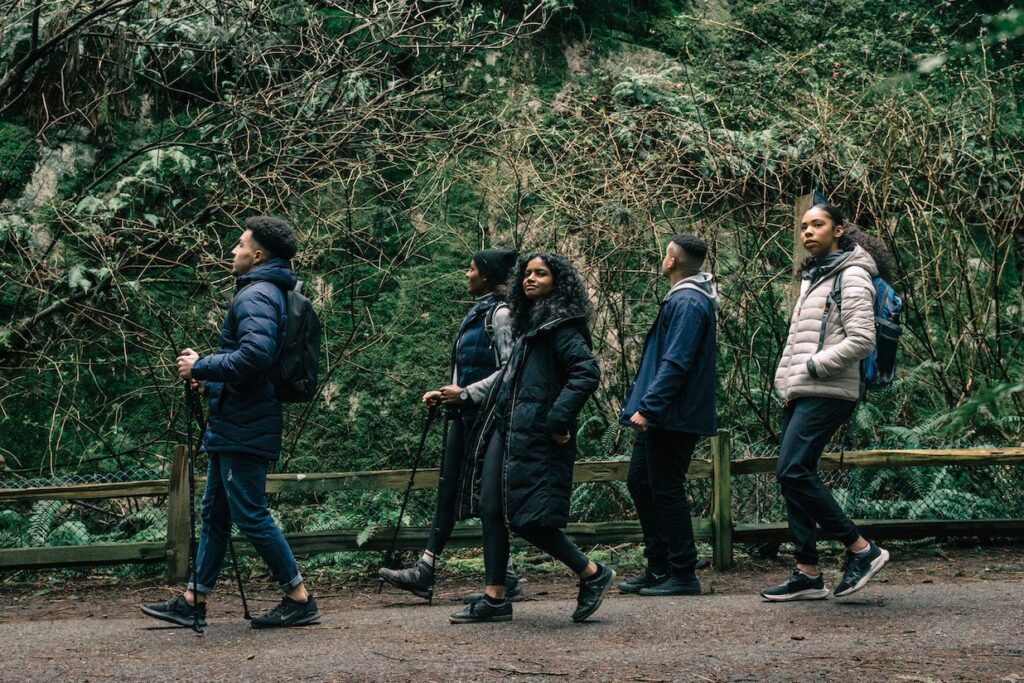Are you ready to embark on an epic hiking journey? Whether you a seasoned hiker or just starting out, having the right gear is essential for a successful and enjoyable adventure. In this ultimate guide, we will explore the must-have hiking gear that will enhance your journey and make it truly unforgettable.
Backpacks: Carry Your World on Your Back
A good hiking backpack is the foundation of any outdoor excursion. It not only carries all your gear but also provides comfort and stability during long hikes. When choosing a backpack, consider the following factors:
Size and Capacity: Finding the Perfect Fit
Backpacks come in various sizes and capacities, so it’s crucial to choose one that suits your needs. A 30-40 liter backpack is ideal for day hikes, while longer trips might require a larger 50-80 liter pack. Try different sizes and find the one that feels comfortable and distributes weight evenly.
Suspension System: Comfort and Support in Motion
Look for a backpack with a reliable suspension system. Padded shoulder straps, adjustable hip belts, and a ventilated back panel will ensure maximum comfort and support. The suspension system should allow for easy adjustment to fit your body shape and size.
Features and Organization: Stay Organized on the Trail
Consider the features and organization options of your backpack. Look for multiple compartments, side pockets for water bottles, and attachment points for gear like trekking poles or a sleeping bag. A well-organized backpack will save you time and keep your essentials easily accessible.
Footwear: Comfort and Traction for Endless Trails
Investing in the right footwear is vital for any hiking adventure. Your shoes or boots should provide comfort, support, and good traction to tackle different terrains and weather conditions.
Hiking Shoes: Lightweight and Versatile
Hiking shoes are a popular choice for day hikes or less strenuous trails. They are lightweight, flexible, and provide excellent breathability. Look for shoes with sturdy soles and ample cushioning to protect your feet.
Hiking Boots: Sturdy and Supportive
If you’re planning on tackling more challenging terrain or carrying a heavy backpack, consider hiking boots. They provide ankle support, stability, and protection from rough trails and harsh weather. Opt for boots with a waterproof membrane for added comfort during wet conditions.
Socks: Cushioning and Moisture Management
Don’t forget about your socks! Invest in high-quality hiking socks that offer cushioning and moisture-wicking properties. Merino wool or synthetic materials are great choices to keep your feet dry and blister-free throughout your journey.
Clothing: Layer Up for Comfort and Protection
Proper clothing is essential for comfort, protection, and temperature regulation while hiking. Layering your clothing allows you to adapt to changing weather conditions without overheating or feeling too cold. Consider the following clothing essentials:
Base Layers: Moisture-wicking and Insulating
Base layers are worn next to your skin and should be moisture-wicking to keep you dry. Depending on the weather, choose between synthetic or merino wool materials for breathability and insulation.
Mid Layers: Warmth and Versatility
Mid layers provide insulation and warmth. Fleece jackets or lightweight down vests are great options, as they are lightweight, breathable, and easy to pack. Opt for layers that can be easily removed or added as needed.
Outer Layers: Protection from the Elements
Your outer layer should protect you from wind, rain, and snow. A waterproof and windproof jacket is essential for unpredictable weather conditions. Look for jackets with sealed seams and adjustable features to keep you dry and comfortable.
Pants: Comfort and Flexibility
Choose hiking pants that are comfortable, breathable, and durable. Convertible pants with zip-off legs are a popular choice as they can be easily transformed into shorts when the weather gets hot. Consider pants with built-in UPF sun protection for extended exposure to the sun.
Navigation Tools: Never Lose Your Way
Even the most experienced hikers can get lost in unfamiliar territory. Having the right navigation tools ensures you can find your way and stay on track.
Map and Compass: Traditional Navigation Tools
Carry a detailed topographic map of your hiking area and learn how to use a compass. These traditional navigation tools are essential for orienteering and can save you from getting lost when electronic devices fail or batteries die.
GPS Devices: Modern Navigation Technology
Portable GPS devices or smartphone apps provide accurate positioning and navigation assistance. They can track your route, provide real-time mapping, and even display points of interest. Remember to bring spare batteries or a power bank to keep your devices charged.
Hydration: Stay Hydrated on the Trail
Staying hydrated is crucial for your overall well-being and hiking performance. Proper hydration keeps you energized, helps regulate body temperature, and prevents dehydration. Consider the following hydration options:
Water Bottles: Always Carry Enough
Carry at least two liters of water for a day hike, and adjust the quantity based on the length and difficulty of your journey. Insulated water bottles maintain the temperature of your beverage longer, while lightweight collapsible bottles are great for saving space when empty.
Hydration Bladders: Convenient and Hands-Free
Hydration bladders, commonly known as “hydration packs,” are backpack-compatible water reservoirs with a drinking tube. They allow you to sip water without stopping or using your hands. Make sure to clean and maintain the bladder regularly to prevent mold or unpleasant taste.
Water Filtration Systems: Drinking From Nature
If you plan on hiking in remote areas or locations with uncertain water sources, consider bringing a water filtration system. These devices filter out harmful bacteria and parasites, allowing you to drink water from natural sources such as streams or lakes.
Safety and Emergency Gear: Be Prepared for the Unexpected
Safety should always be a top priority while hiking. Packing the right safety gear ensures you’re prepared for unexpected situations and emergencies.
First Aid Kit: Ready for Anything
A well-stocked first aid kit is a must-have for any outdoor adventure. It should include essentials such as bandages, adhesive tape, antiseptic wipes, pain relievers, and insect repellent. Customize your kit based on personal needs and the length of your journey.
Emergency Shelter: Finding Shelter in the Wilderness
An emergency shelter, such as a lightweight tent or a bivy sack, provides protection from extreme weather conditions or unexpected overnight stays. Choose a shelter that is compact, easy to set up, and suitable for the terrain you’ll be hiking in.
Headlamp: Lighting Up the Night
A reliable headlamp is essential for overnight hikes or when unexpected delays occur. Choose a headlamp with adjustable brightness levels and a long battery life. Don’t forget to bring extra batteries or a backup light source.
Whistle and Signal Mirror: Catching Attention
A whistle and a signal mirror are important communication tools in case of emergencies. A whistle’s loud sound can alert others to your presence, while a signal mirror can attract attention from a distance. Keep these lightweight items accessible and within reach.
Optional Gear: Enhancing Your Hiking Experience
While not essential, there are additional gear options that can enhance your hiking experience and make it even more enjoyable.
Trekking Poles: Stability and Reducing Strain
Trekking poles provide stability, reduce strain on your knees and joints, and help with balance and propulsion. They are especially useful during steep ascents or descents and when navigating through uneven terrains.
Portable Stove: Warm Meals on the Trail
A portable stove allows you to cook warm meals or enjoy a hot drink during your hiking journey. Lightweight and compact models that use fuel canisters are practical and easy to use. Always follow safety precautions and local regulations for cooking in wilderness areas.
Camera or Smartphone: Capture the Memories
Bring a camera or use your smartphone to capture the breathtaking views and memorable moments during your hike. Share your experiences with others and create lasting memories.
Conclusion: Gear Up and Hit the Trails
Congratulations! You now have the ultimate guide to hiking gear and are ready to embark on an epic journey. Remember, each hike is unique, so adapt your gear and clothing based on the terrain, climate, and length of the hike. Before setting off, familiarize yourself with the area, trail maps, and local regulations.
Hiking is not just about the destination; it’s about the journey itself. So take in the beauty of nature, challenge yourself, and enjoy every step along the way. Gear up, hit the trails, and create memories that will last a lifetime.
Safe travels and happy hiking!




